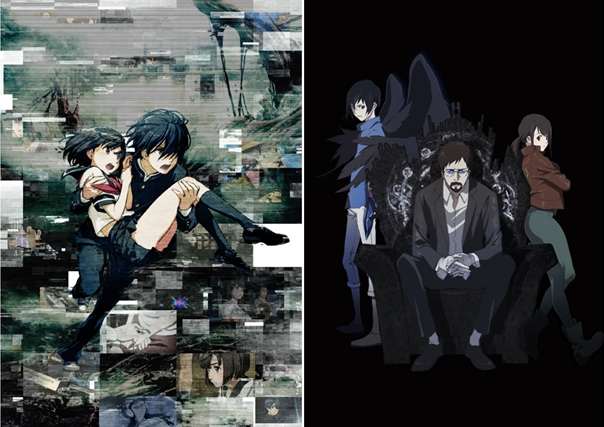Ask John: Is Netflix Creating a Revolution?

Question:
Is Netflix creating a revolution similar to that generated by the introduction of the OVA format?
Answer:
Inherent within the term “revolution” is the concept of “revolutionary,” in this context meaning to introduce something new, groundbreaking, or different from before. So far, I don’t see Netflix fulfilling that potential. But that’s not to say that Netflix doesn’t have the potential. California-based home-video producer & distributor Netflix both streams and produces Japanese animation, alongside many other types of cinema. Netflix has announced its financial contribution to the production of twenty 2018 anime series. However, Netflix is far from the first American company to co-produce anime. In fact, American co-production dates back to the very beginning of what we know as modern anime. NBC agreed to co-fund the production of Mushi Production’s 1963 Tetsuwan Atom television series in return for American broadcast rights to the show. American co-financing occurred again in the early 1980s when the Christian Broadcasting Network co-financed the 1981 production of Tatsunoko’s Anime Oyako Gekijo, known in America as “Superbook,” and MGM/UA Television co-financed TMS’ 1984 series Mighty Orbots. Since the late 1990s American companies including Manga Entertainment, AD Vision, Bandai Entertainment USA, Pioneer and Geneon USA, Funimation, and Warner Bros., just to name a few, have invested in the production of anime for Japanese and international release. So in terms of contributing funding for the production of new anime, Netflix is hardly revolutionary.
Japanese distributors have been streaming their anime online for Japanese viewers for years. Kadokawa & Media Works launched their “Chara Ani” website on November 24, 1999. Just over a year later the site exclusively streamed the Azumanga Web Daioh anime series. Bandai Channel began streaming episodes of its anime catalog in 2002. The Toei Anime BB Premium service launched in 2007. BIGLOBE launched its Anime One streaming service in 2009. The earliest known commercially produced anime exclusive to web distribution was the six-episode Mugen no Ryvius: Illusion series of super-deformed comedy shorts hosted on the Mugen no Ryvius TV series’ official site. The first web original anime was Project PAPO, created by Gonzo Digital Holdings’ subsidiary studio G-creators, streamed online beginning on December 26, 2000. So Netflix producing new anime for online distribution is also not a groundbreaking development.
The 1983 launch of the OVA format signaled a new era for the anime industry, expanding not just the potential content of anime but also the amount of anime produced. Nowadays, there are no new anime distribution methods on the horizon. Particularly with Production I.G aggressively partnering with Tate Anime to pioneer commercial cell phone anime, mobile streaming anime may have some small potential to further expand the dispersion of anime. But cell phone distribution isn’t likely to affect the audience demographic or content of anime. The OVA era inspired countless new producers to invest in anime production; however, the home video cassette was new technology at the time, and the Japanese economic bubble provided plenty of investors with liquid capital to contribute to anime studios. Presently Netflix is not launching a new medium of video distribution, and there aren’t dozens of other streaming companies flush with cash and eager to invest in anime production. If Netflix shows unexpectedly large returns from its anime production, Hulu might follow suit and invest in anime production. Amazon already is producing original streaming anime but doesn’t seem eager to significantly ramp up its investment. So even if Netflix’s original anime turn out to be tremendously successful, there simply aren’t very many other established American streaming services that could likewise invest in additional anime co-production and create a new flood of anime development. So the possibility of Netflix breaking open a new era of anime production and distribution comparable to the OVA boom doesn’t appear likely.
However, Netflix’s entry into anime co-production is certainly a boon to Japan’s anime industry and moreover does hold the possibility of doing something revolutionary in the future. Occasionally new high-profile sponsors invest in anime production, resulting in numerous new shows getting produced. That situation occurred when the Avex Group began producing anime in the 1990s. Netflix producing twenty shows may result in as many as twenty anime that otherwise would never have been greenlit this year. Furthermore, the unique entity of Netflix affects the type of anime being produced. There’s absolutely no certainty that remakes of Devilman and St. Seiya, for example, would have been approved and funded had they not been intended for global distribution largely to viewers unfamiliar with the properties. For example, St. Seiya is such a familiar property in Japan that Toei Animation would be unlikely to produce a reboot starting from the very beginning of the manga if the intended audience was predominantly only Japanese viewers. But distributing a new St. Seiya anime through Netflix allows Toei to introduce the franchise to millions of new viewers who are entirely unfamiliar with the property, so a reboot makes sense as a Netflix show.
While Netflix isn’t likely to revolutionize the anime industry the way the emergence of the OVA format did in the 80s, the company does have some smaller but prominent opportunities. Netflix has already demonstrated its interest in competing with traditional theatrical distribution by developing its original tentpole film Bright. No theatrical anime has ever had a simultaneous global wide release. Netflix has already financed the production of anime feature films, Blame and the Godzilla: Kaijuu Wakusei trilogy. So Netflix could revolutionize anime distribution by being the first producer to ever release an anime feature film globally on the same day. Another possible revolution in anime distribution could be the simultaneous release of theatrical and home video iterations of an anime franchise. Some series have had a relatively close release. The first Slayers movie hit theaters just under six months after the premiere of the TV series. Likewise the El Hazard TV series premiered just under six months after the OVA series. But I can’t think of an integrated theatrical and broadcast or streaming release that occurred simultaneously. Other possible revolutions will likely have to remain something for other minds to invent. If I knew exactly what groundbreaking distribution or production paths Netflix could take with anime, I’d probably be working as a Netflix executive.



